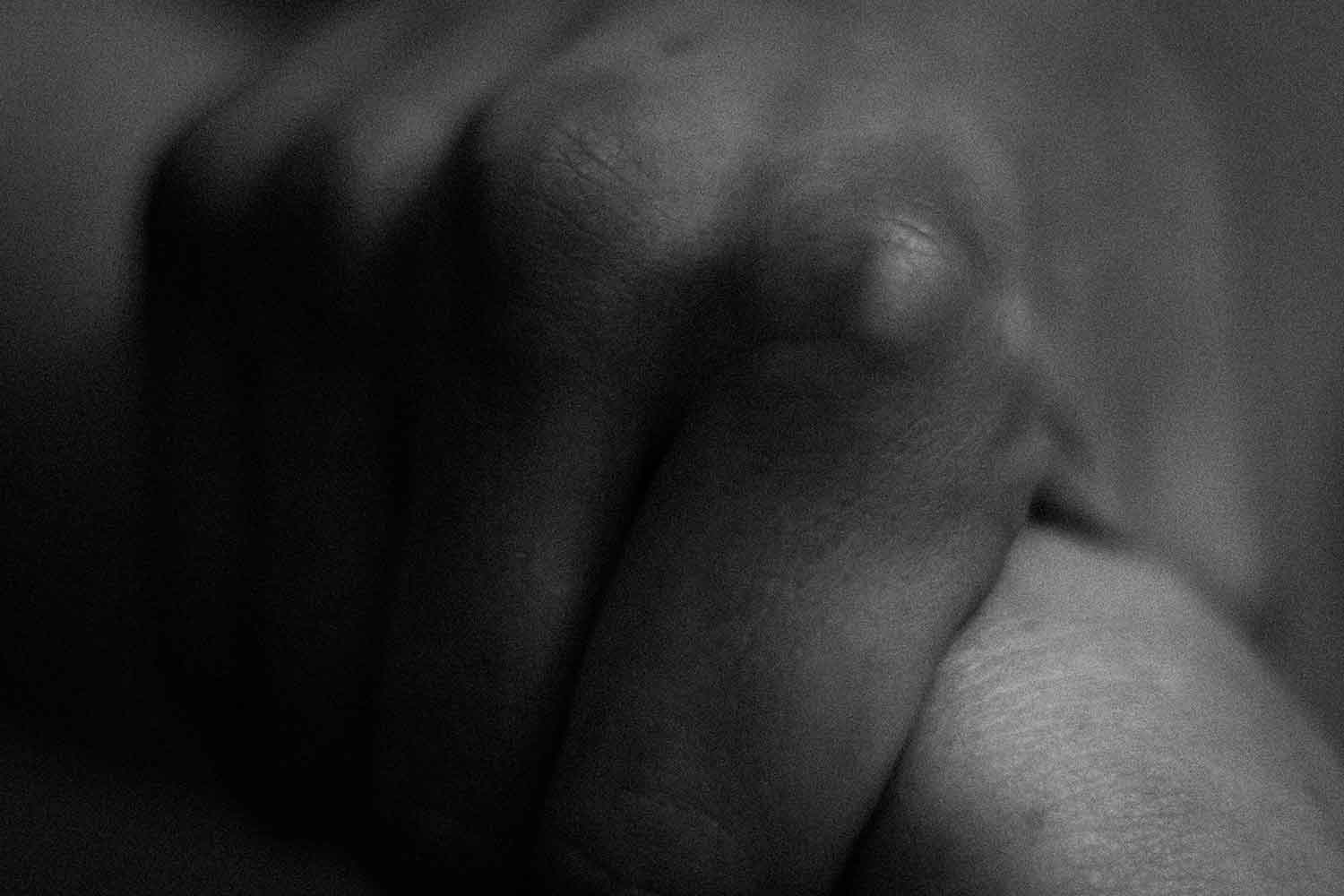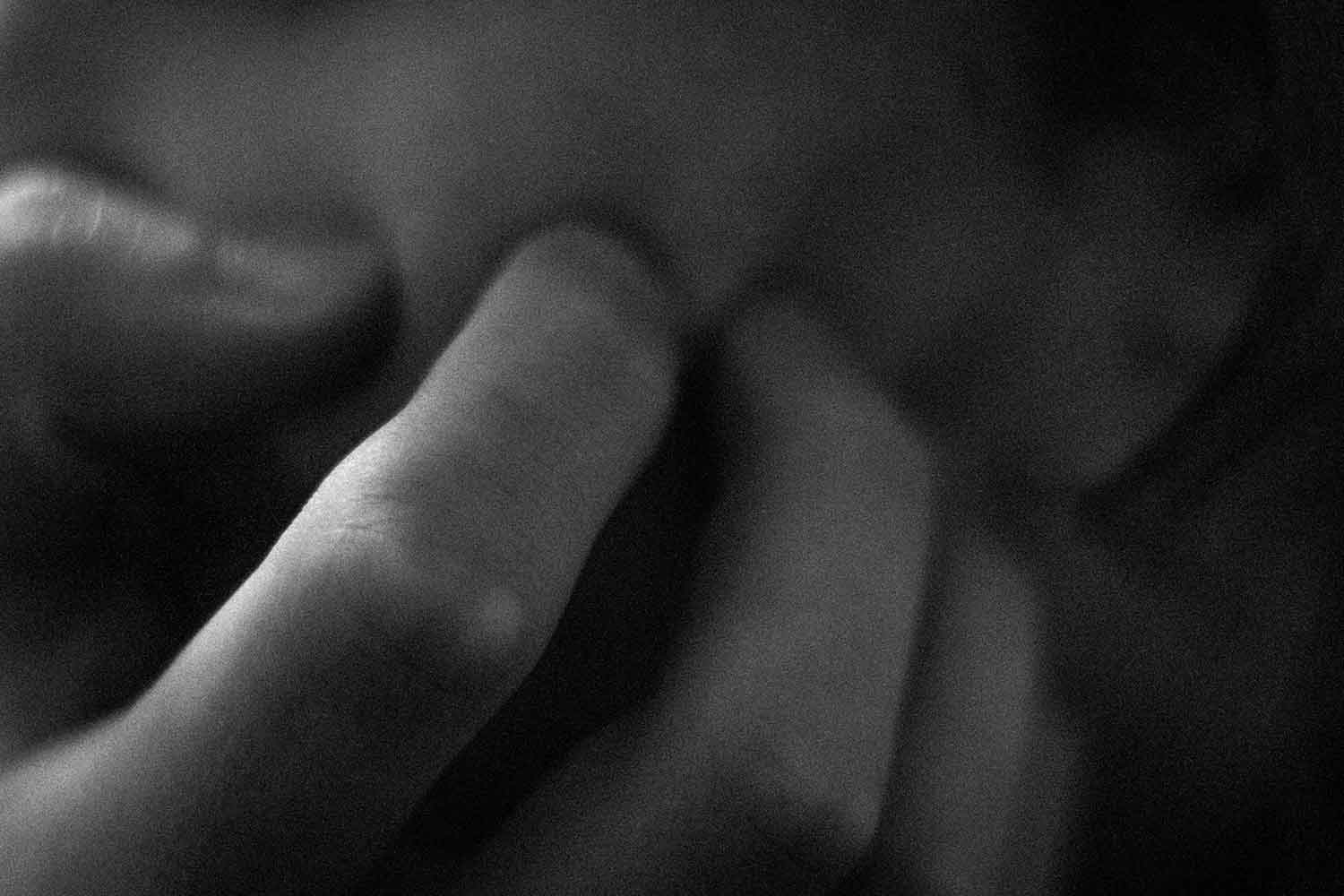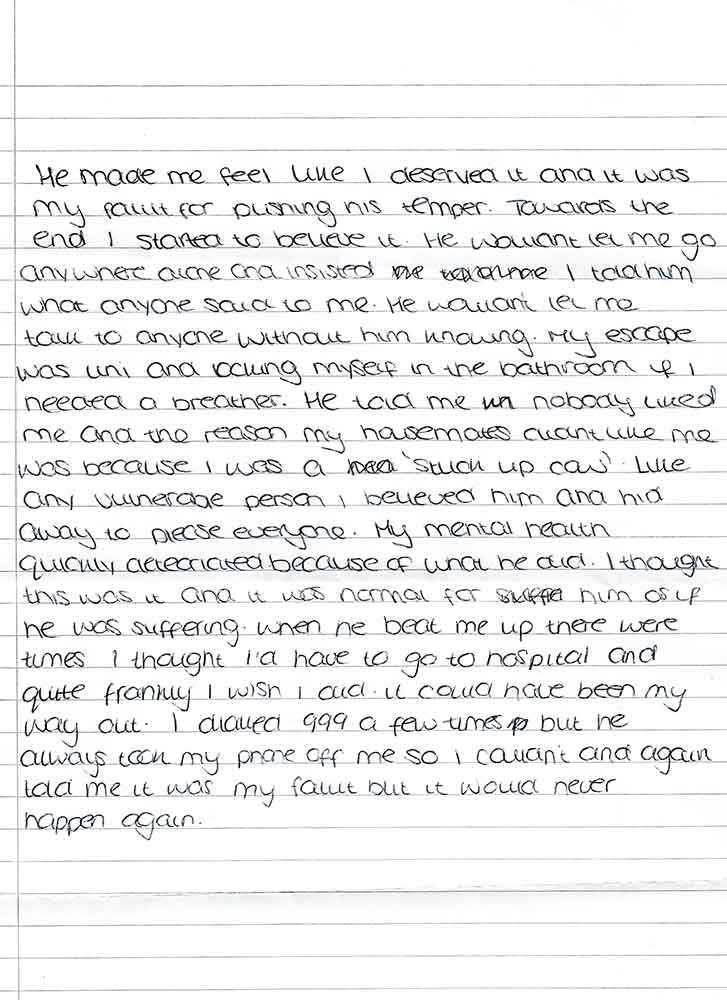Domestic abuse can happen to anyone, both Male and Female; this can include physical, mental and sexual abuse within a relationship or family member. There are multiple kinds of domestic violence, but it is always about having control and power over another.
My work will be used and exhibited to raise awareness on this topic. By raising awareness will help many to understand the emotions felt by a victim and experiences one may feel in a relationship controlled by violence. The purpose of my work is to open up one’s perspective and allow this topic to be discussed more openly, resulting in victims speaking out about it or encourage the committer to realise what they are doing and change their ways.
Photographed from an abstract perspective I crop tightly framing the form and shape of the body parts. This perspective portrays the notion of invading space, as though we are peaking through a closed door, an invasion of their personal life, a view of what they hide from the public eye. Expressing dark tones I set the mood of the scene. The black, white and grey tones are seen as dull and lifeless, associating with the feelings of a victim of domestic violence.




This body of work was later exhibited as part of the ‘Close Up‘ group exhibition at Lime gallery, February 2019.
Victim Statement

‘He made me feel like I deserved it and it was my fault for pushing his temper. Towards the end I started to believe it. He wouldn’t let me go anywhere alone and insisted I told him what anyone said to me. He wouldn’t let me talk to anyone without him knowing. My escape was Uni and cutting myself in the bathroom if I needed a breather. He told me nobody liked me and the reason my housemates didn’t like me was because I was a ‘stuck up cow’. Like any vulnerable person I believed him and hid away to please everyone. My mental health quickly deteriorated because of what he did. I thought this was it and it was normal for him as if he was suffering. When he beat me up there were time I thought I’d have to go to hospital and quite frankly I wish I did, it could have been my way out. I dialled 999 a few times but he always took my phone off me so I couldn’t and again told me it was my fault but it would never happen again.’
How to Identify Domestic Abuse
Threats and intimidation
• Does your partner ever: threaten to hurt or kill you?
• Destroy things that belong to you? stand over you, invade your personal space?
• Threaten to kill themselves or the children?
• Read your emails, texts or letters?
• Harass or follow you?
Sexual Abuse
• Sexual abuse can happen to anyone, whether they’re male or female.
• Does your partner ever: touch you in a way you don’t want to be touched?
• Make unwanted sexual demands?
• Hurt you during sex? pressure you to have unsafe sex – for example, not using a condom?
• Pressure you to have sex?
Emotional Abuse
•Does your partner ever: belittle you, or put you down?
•blame you for the abuse or arguments?
•deny that abuse is happening, or play it down?
•isolate you from your family and friends?
•stop you going to college or work?
•make unreasonable demands for your attention?
•accuse you of flirting or having affairs?
•tell you what to wear, who to see, where to go, and what to think?
•control your money, or not give you enough to buy food or other essential things?
Facts and statistics on Domestic Abuse
Domestic Violence happens a lot more than you may think, I have gathered a few statistics to help you understand how often this occurs:
• A woman is assaulted or beaten every nine seconds
• 1 in 3 women – and 1 in 4 men – have been in abusive relationships, and 1 in 5 women and 1 in 7 men have faced severe physical violence
• 20 people are abused by an intimate partner every minute, adding up to 10 million each year.
• More than 200,000 phone calls are placed to domestic violence hotlines every year.
• Intimate partner violence accounts for 15% of all violent crimes.
• The presence of guns in a home where domestic violence is a problem increases the risk of murder by 50%.
Both Men and Women can be victims, one study found that 40% of domestic violence victims are men. This concludes no gender is safe, and no amount of physical strength or emotional fortitude protects against abuse.
How to help someone in an abusive relationship
If you’re worried a friend is being abused, let them know you’ve noticed something is wrong. They might not be ready to talk, but try to find quiet times when they can talk if they choose to.If someone confides in you that they’re suffering domestic abuse:
• Listen, and take care not to blame them.
• Acknowledge it takes strength to talk to someone about experiencing abuse.
• Give them time to talk, but don’t push them to talk if they don’t want to.
• Acknowledge they’re in a frightening and difficult situation.
• Tell them nobody deserves to be threatened or beaten, despite what the abuser has said.
• Support them as a friend – encourage them to express their feelings, and allow them to make their own decisions.
• Don’t tell them to leave the relationship if they’re not ready – that’s their decision.
• Ask if they have suffered physical harm – if so, offer to go with them to a hospital or GP.
• Help them report the assault to the police if they choose to.
• Be ready to provide information on organisations that offer help for people experiencing domestic abuse.
If you or someone you know is struggling from domestic abuse then please call the 24-hour free national helpline on 0800 2000 247 or you can visit the website and talk online.


